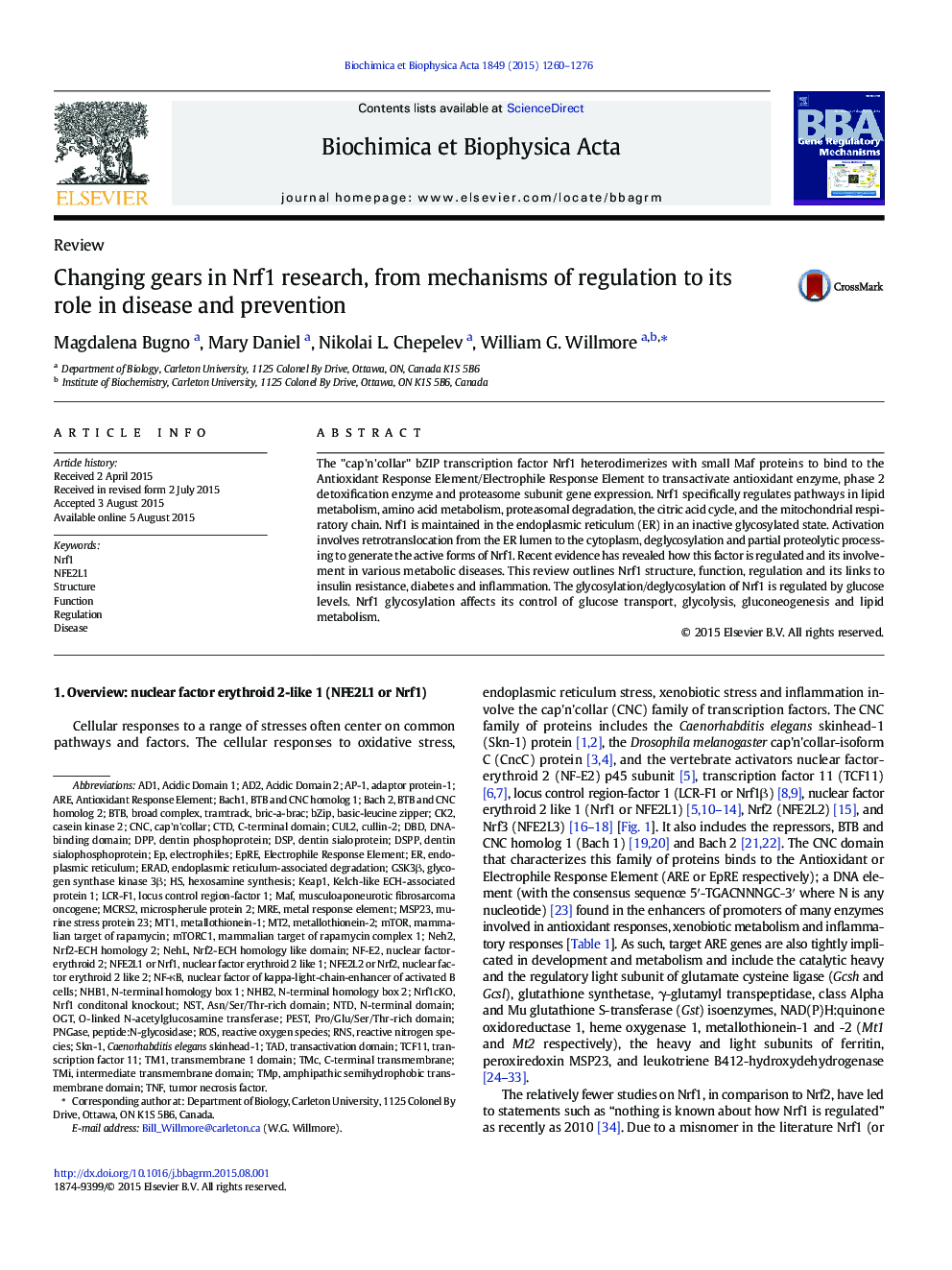| Article ID | Journal | Published Year | Pages | File Type |
|---|---|---|---|---|
| 1946374 | Biochimica et Biophysica Acta (BBA) - Gene Regulatory Mechanisms | 2015 | 17 Pages |
•The transcription factor Nrf1 is regulated by glycosylation under high fat feeding conditions.•Nrf1 regulates antioxidant and phase 2 enzyme expression as well as proteasome function.•Glycosylation of Nrf1 maintains it in an inactive state in the endoplasmic reticulum.•Proteasome processing of Nrf1 results in truncated forms that act as both activators and inhibitors.•Nrf1 function is deregulated in inflammation and diabetes.
The "cap'n'collar" bZIP transcription factor Nrf1 heterodimerizes with small Maf proteins to bind to the Antioxidant Response Element/Electrophile Response Element to transactivate antioxidant enzyme, phase 2 detoxification enzyme and proteasome subunit gene expression. Nrf1 specifically regulates pathways in lipid metabolism, amino acid metabolism, proteasomal degradation, the citric acid cycle, and the mitochondrial respiratory chain. Nrf1 is maintained in the endoplasmic reticulum (ER) in an inactive glycosylated state. Activation involves retrotranslocation from the ER lumen to the cytoplasm, deglycosylation and partial proteolytic processing to generate the active forms of Nrf1. Recent evidence has revealed how this factor is regulated and its involvement in various metabolic diseases. This review outlines Nrf1 structure, function, regulation and its links to insulin resistance, diabetes and inflammation. The glycosylation/deglycosylation of Nrf1 is regulated by glucose levels. Nrf1 glycosylation affects its control of glucose transport, glycolysis, gluconeogenesis and lipid metabolism.
Graphical abstractFigure optionsDownload full-size imageDownload high-quality image (217 K)Download as PowerPoint slide
